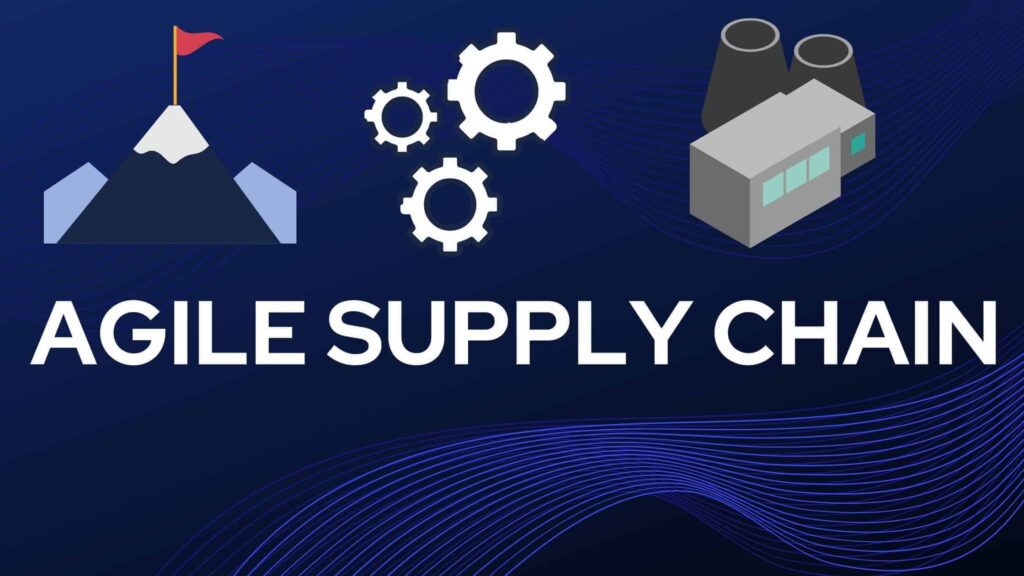
In today’s ever-evolving and dynamic business landscape, the concept of an agile supply chain has emerged as a fundamental component for companies striving to remain competitive and responsive to market changes. An agile supply chain represents a strategic approach that emphasizes adaptability, flexibility, and responsiveness to meet the ever-changing demands of customers and the challenges posed by a rapidly shifting marketplace.
This article delves into the core principles of an agile supply chain and presents effective strategies to improve and optimize it for maximum efficiency and responsiveness.
WHAT IS AN AGILE SUPPLY CHAIN?
An agile supply chain is a dynamic and responsive approach to managing the flow of goods, services, and information from the source to the end customer. It emphasizes adaptability, flexibility, and efficiency in meeting changing customer demands and market conditions. An agile supply chain is characterized by its ability to quickly adjust to disruptions, changes in consumer preferences, market fluctuations, and other unexpected events.
5 CHARACTERISTICS OF AN AGILE SUPPLY CHAIN

Here are five key characteristics of an agile supply chain:
Flexibility and Adaptability
Agile supply chains are highly flexible, allowing for swift adjustments in response to changes in customer demand, market trends, or unexpected disruptions. These chains can quickly reallocate resources, change production schedules, and modify strategies to accommodate shifts in requirements.
Rapid Response Capability
Agility in supply chains enables quick responses to market changes. This includes prompt decision-making, fast product development, and efficient distribution to meet evolving customer needs and capitalize on emerging opportunities.
Collaborative Relationships
Strong partnerships and collaboration with suppliers, manufacturers, distributors, and other stakeholders are vital in agile supply chains. These relationships foster effective communication, shared goals, and coordinated efforts, allowing for seamless information flow and decision-making.
Real-time Visibility and Transparency
Agile supply chains rely on real-time data and visibility across the entire supply network. This transparency enables better decision-making, as stakeholders have access to up-to-date information, which helps identify potential issues and opportunities.
Emphasis on Innovation and Continuous Improvement
Agile supply chains prioritize innovation, adopting new technologies, methodologies, and processes to enhance efficiency and performance continually. They are open to embracing change and adapting best practices to remain competitive in dynamic market conditions.
These characteristics collectively contribute to the resilience, adaptability, and efficiency of an agile supply chain, enabling companies to navigate uncertainties and market shifts effectively.
BENEFITS OF HAVING AN AGILE SUPPLY CHAIN

Having an agile supply chain offers numerous advantages, enabling companies to adapt to changing market dynamics and meet customer demands effectively. Here are five key benefits of implementing an agile supply chain:
Enhanced Responsiveness to Market Changes
Agility in the supply chain allows for quick adjustments in production, inventory, and distribution to respond rapidly to changes in demand, market trends, or unexpected disruptions. This responsiveness enables companies to stay ahead in a dynamic market environment.
Improved Customer Satisfaction
Agile supply chains focus on meeting customer needs efficiently. By being more responsive to demand fluctuations and swiftly addressing customer requirements, they enhance overall customer satisfaction, building loyalty and trust.
Increased Operational Efficiency
Agility often leads to streamlining operations and reducing inefficiencies. With the ability to adapt swiftly, companies can optimize their processes, reduce lead times, and minimize waste, thereby enhancing overall operational efficiency.
Better Risk Management and Resilience
Agile supply chains are better equipped to manage risks and uncertainties. By having contingency plans in place and being adaptable, these supply chains can effectively navigate disruptions, whether they’re due to natural disasters, geopolitical events, or changes in market conditions.
Cost Savings and Competitive Advantage
Agility in the supply chain can lead to cost reductions through efficient resource allocation, reduced inventory, and streamlined processes. By being agile, companies can often gain a competitive edge by offering faster delivery, better customization, and improved service levels compared to competitors with more rigid supply chains.
Overall, It is instrumental in fostering adaptability, efficiency, and customer-centricity. It provides businesses with a significant edge in today’s fast-paced and competitive markets.
HOW TO IMPROVE AGILE SUPPLY CHAIN

Improving an agile supply chain involves refining processes, adopting new strategies, and leveraging technologies to enhance flexibility, responsiveness, and efficiency. Here are three key ways to improve an agile supply chain:
Enhance Collaboration and Communication:
- Strengthen relationships with suppliers, distributors, and other partners in the supply chain. Foster open communication and collaboration to share real-time data, insights, and goals.
- Implement collaborative technologies and platforms to enable seamless information exchange among stakeholders, improving coordination and decision-making.
Invest in Technology and Data Analytics:
- Utilize advanced technologies like Internet of Things (IoT), AI, and data analytics to gain real-time visibility and predictive insights into the supply chain.
- Implement advanced forecasting tools and data analytics to anticipate demand, manage inventory levels, and optimize production schedules, enabling proactive decision-making.
Flexibility and Adaptability:
- Focus on flexibility by designing processes and strategies that can easily adapt to changes in demand or market conditions.
- Embrace agile methodologies in production, such as lean manufacturing or just-in-time manufacturing, to reduce waste and respond swiftly to alterations in customer demand.
Additionally, continuous improvement and a willingness to adapt to changing circumstances are essential. Regularly assess the performance of the supply chain and seek feedback from stakeholders to identify areas for enhancement. By integrating these strategies and maintaining a commitment to agility, a company can significantly improve its supply chain operations.